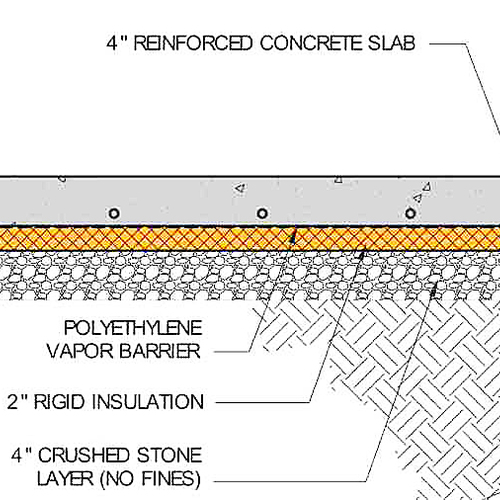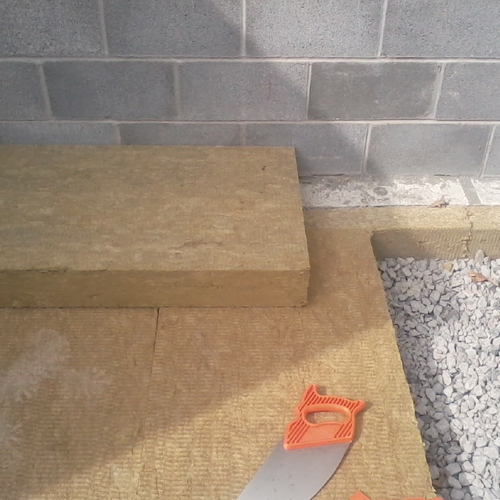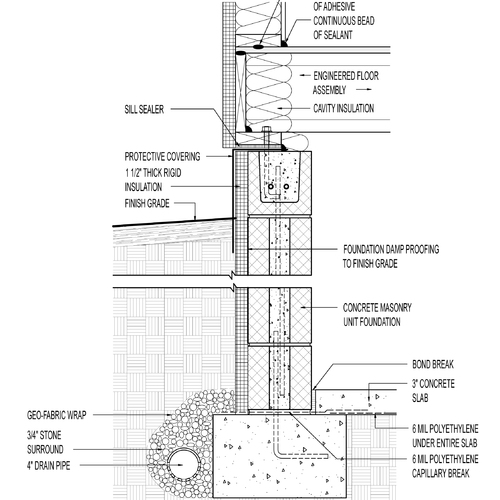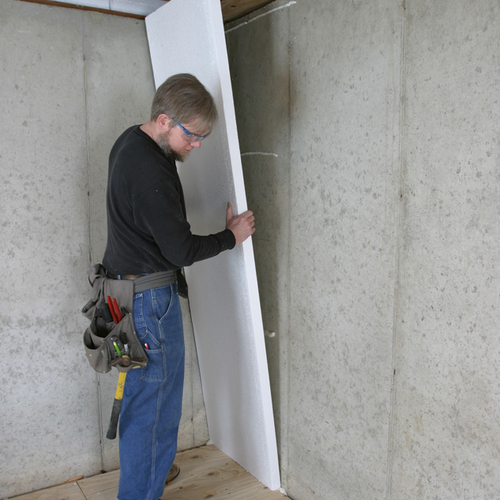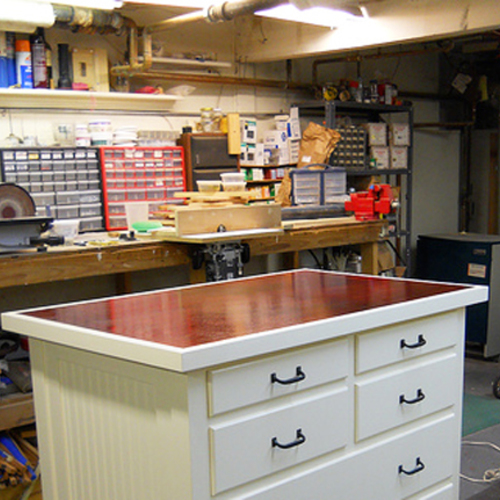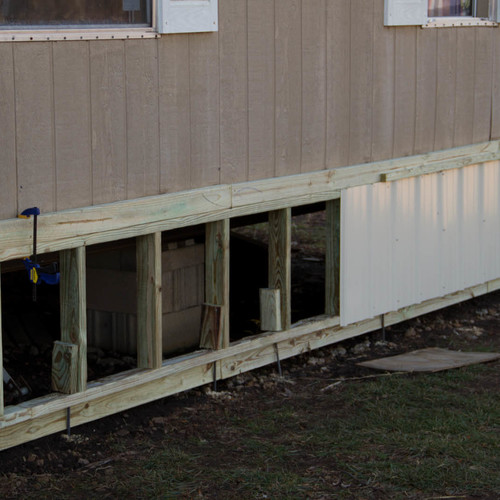
This is a list of the most important GBA articles on foundations.
If you are looking for an index that spans all categories, with a special focus on “how to” articles, check out this resource page: “How to do Everything.”
-
Foundation Types
A Foundation Supports a House While Holding Back Moisture
-
Polyethylene Under Concrete Slabs
What goes under the concrete in a slab-on-grade home? In the old days, not much — just dirt. Eventually, contractors discovered that it made sense to include a 4-inch-thick layer of crushed stone under the concrete. The crushed stone provides a capillary break that reduces the amount of moisture flowing upward from the damp soil to the permeable concrete. Since the crushed stone layer provides a fairly uniform substrate, it also may also reduce the chance that a concrete slab will be poorly supported by random pockets of soft, easily compressible soil.
-
Sub-Slab Mineral Wool
UPDATED on April 5, 2016
-
Foam Under Footings
UPDATED on January 26, 2018 A wide variety of residential foundation types, including monolithic slabs, crawl space foundations, and basement foundations, can lose heat due to poorly detailed insulation at the concrete footings. That’s because many construction details, including some details on the GBA Web site, fail to address thermal bridging through foundation footings.
-
How to Insulate a Basement Wall
Here at GBA, we regularly receive questions from readers about the best way to insulate a basement wall. Since these questions pop up frequently, it’s time to pull together as much information as possible on this topic. In this article, I’ll try to explain everything you always wanted to know about insulating basement walls.
-
All About Basements
Foundation discussions can get heated. For some reason, builders often dig in their heels when the topic of slabs versus crawl spaces versus basements comes up. It’s time to declare a truce. It’s perfectly possible to build a great house on any one of these three foundation types, as long as everything is properly detailed. Each type of foundation has advantages as well as disadvantages. If you have a foundation type that you prefer, that’s great. I’m not going to try to change your mind.
-
Building an Unvented Crawlspace
Residential foundations vary widely from one corner of the U.S. to another. Builders in some regions love basements, while builders in other regions swear by slabs on grade. Although most builders have a theory to explain these regional preferences, the main reason for these variations is habit, not logic. In areas of the country where basements are rare, there usually aren’t any technical barriers to building basements; and up north, where basements rule, it’s perfectly possible to build on a slab.
-
Crawl Spaces vs. Skirts
Many older homes in rural areas have pier foundations. The piers may be made of wood (for example, creosoted posts or pressure-treated lumber), poured concrete, CMUs, or bricks. The space between the dirt and the underside of the floor framing may be enclosed or may be entirely open to the wind.


